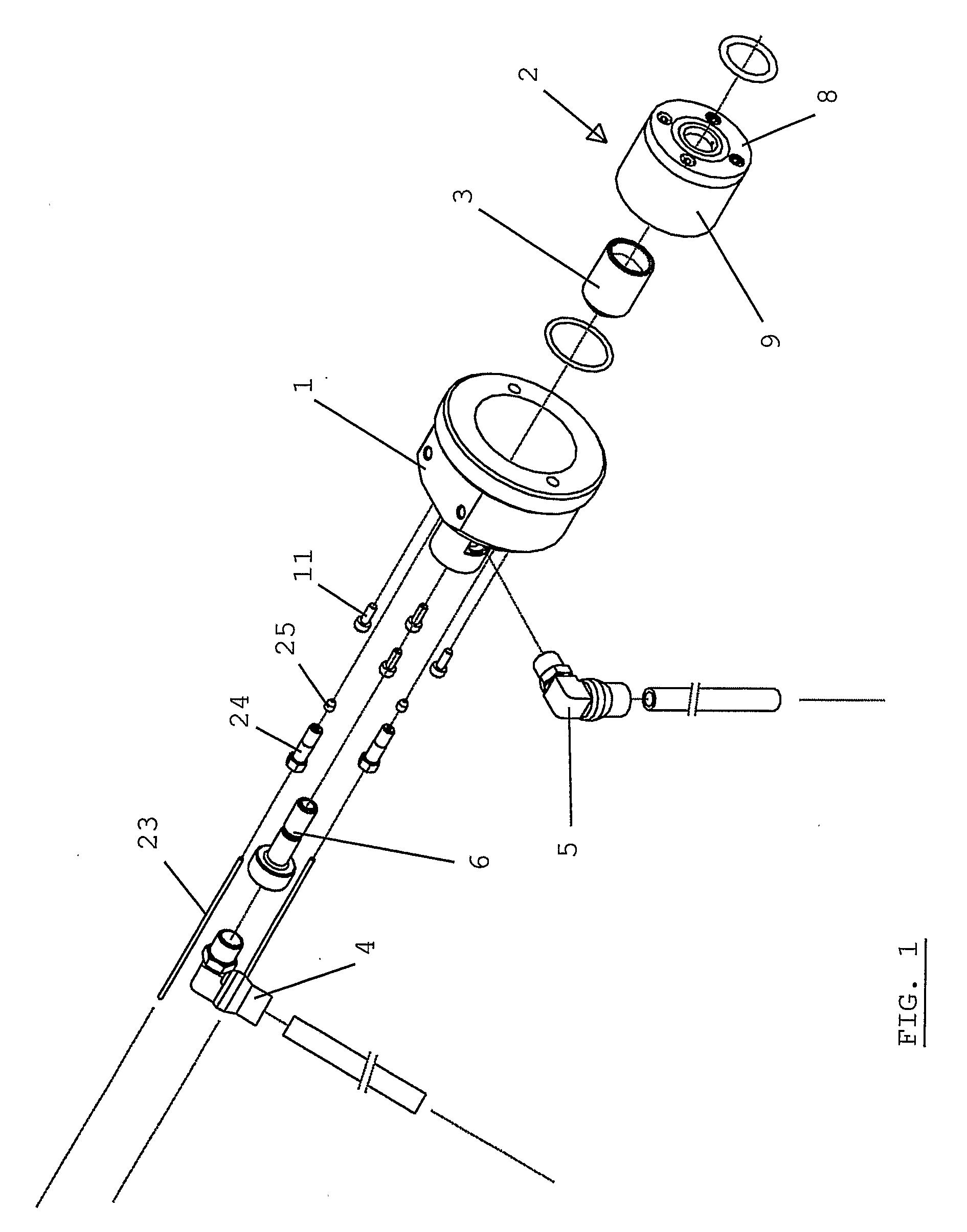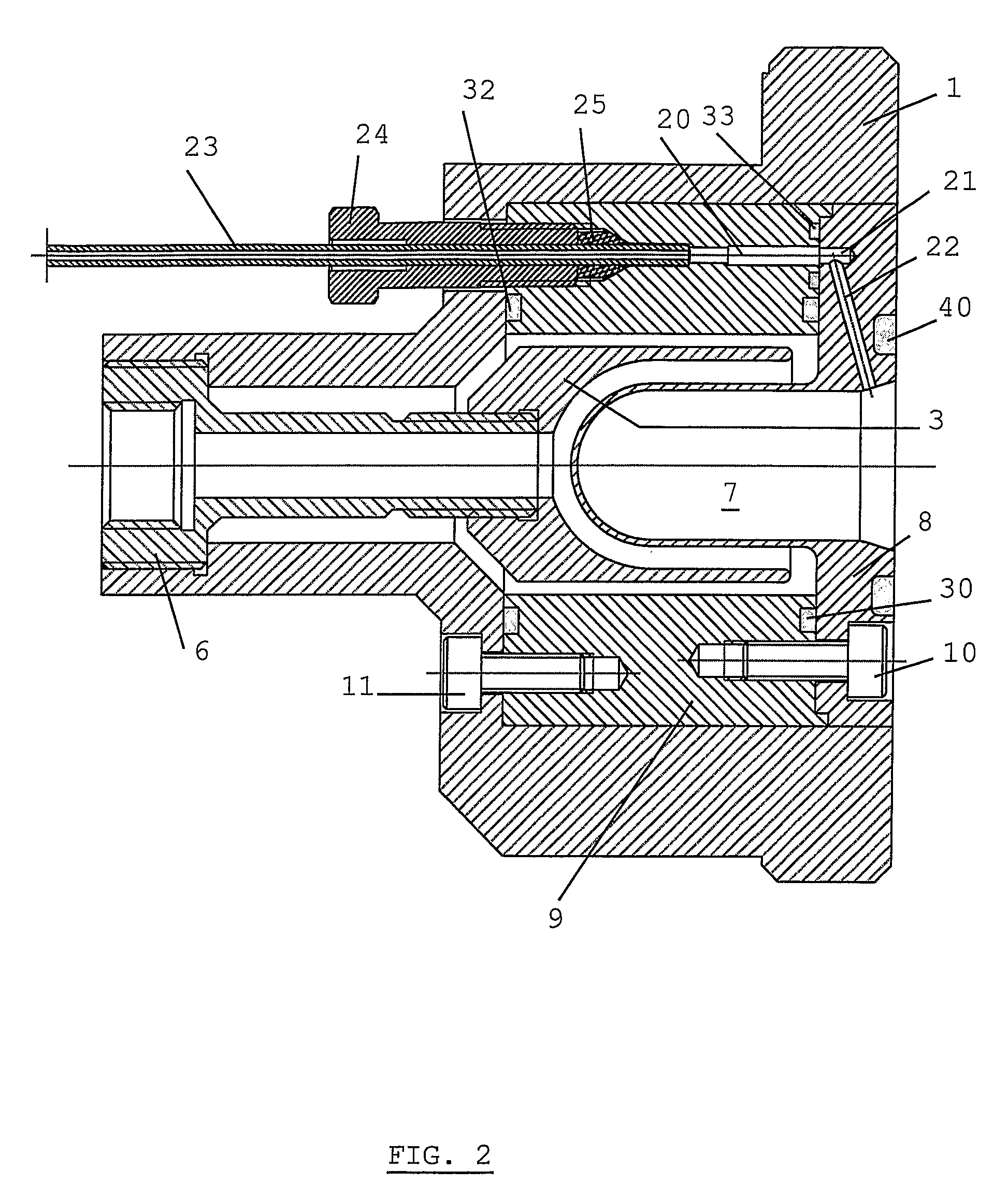Target Device for Producing a Radioisotope
a radioisotope and target device technology, applied in the field of nuclear medicine, can solve the problems of limiting the intensity and/or energy of the particle beam that is being used, power dissipation, and radioisotope production intensity
- Summary
- Abstract
- Description
- Claims
- Application Information
AI Technical Summary
Benefits of technology
Problems solved by technology
Method used
Image
Examples
Embodiment Construction
[0034]The invention is related to an irradiation cell, for the purpose of containing, inside a cavity, the material to be irradiated for producing radioisotopes. The cell comprises internal cooling means for cooling the cavity, and a metallic insert comprising the cavity. The inventive aspect of the cell is that the insert is made of at least two parts, assembled together, and made of different materials. The part which comprises the cavity is designed in such a way that it is easy to produce in any material, so that it can be produced for instance in niobium, or in tantalum, which are the most suitable materials for irradiation purposes. The other part or parts of the insert can then be produced in another material. The invention is equally related to the metallic insert per se.
[0035]A preferred embodiment of the irradiation cell 1 is disclosed in the accompanying drawings. FIG. 1 is a 3-d view of the irradiation cell assembly, including the connections for the cooling medium. The ...
PUM
 Login to View More
Login to View More Abstract
Description
Claims
Application Information
 Login to View More
Login to View More - R&D
- Intellectual Property
- Life Sciences
- Materials
- Tech Scout
- Unparalleled Data Quality
- Higher Quality Content
- 60% Fewer Hallucinations
Browse by: Latest US Patents, China's latest patents, Technical Efficacy Thesaurus, Application Domain, Technology Topic, Popular Technical Reports.
© 2025 PatSnap. All rights reserved.Legal|Privacy policy|Modern Slavery Act Transparency Statement|Sitemap|About US| Contact US: help@patsnap.com



